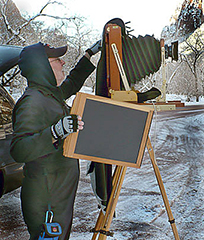
JB Harlin With 11×14 Camera
To answer that question, Camera Clubs have turned into Computer Clubs! Why? I really do not know why, but I have an idea.
People in general are consumer driven by what the large manufacturers say and do. Certain large, should I say behemoth, manufacturers have taken the initiative to try and influence the photographic market place. Corporate bean counters are forever trying to enhance the bottom line. These so called Harvard MBA’s have little to no experience in reality, they just look to their book learning and spread sheets for bigger, better, faster. They are paid to find pie-in-the-sky schemes that look good for the bottom line. They know little about the product nor its users. And, they really don’t care about anything beyond the quarterly report to the board and share holders. This mindset has filtered into the film photography industry. They don’t care about their product nor their customers beyond what they can get from either or both. Hence the battle cry “Film Is Dead” has gone out through the photography world because someone thinks that is where they can make the most money. And, people, sadly most people, follow like sheep. Repeating the call and believing it is true.
How many times have I been asked, “where do you get film for that camera?” This gets really old in a hurry, but the reality is, people are just misinformed. Way too much TV, radio, magazine ads, billboards, newspapers, Internet, etc, for anyone’s good. We, as a society, are pounded day and night with endless advertising. And, sadly, we believe it! “We couldn’t say it on TV if is wasn’t true” is something I hear on some infomercial. Remember, advertisers will tell you anything to get your money!
OK, so what does this have to do with the Camera/Computer Club? It seems that they have become one of the sources for the misconception of the Film Is Dead hoax. Go to most any club, bring up film, and you will be instantly told there is no such thing. It is not that they are trying to intentionally mislead, they are just misinformed. They have bought into the hoax, because it is what they have heard somewhere. And what ticks me off is the fact that they continue to spread false information.
My wife and myself in the past were involved with camera clubs. Why? Because it was a place to meet like-minded individuals and share our interests. Several years ago we found that more and more we had little in common with the other members. They were speaking in tongues, discussing materials and equipment we knew nothing about and had no interest in learning. You can say we lost that ‘like mindedness.’ We cease to be interested and are no longer members.
So, why should this bother me? Because misinformation is detrimental to creativity and the art of photography. I really don’t care if you shoot digital. It is simple; Digital Is Its Own Art Form! Acrylic paint did not replace oil for the painter. In this modern age, people still use candles, hand write letters, ride horses, and who knows what else that has evolved into some more up-to-the-minute technology. Why this all-out move to kill film photography and to try and convince anyone interested that digital is the only choice?
What bothers me is the fact that clubs preach from the rafters the falsehood that film is gone. What if someone wanting to express their artistic vision joins a camera club to learn the craft? They are told film is no longer manufactured, not available, don’t bother. Then they spend their time and money working with digital only to learn later that film is still alive and possibly more important, the direction more suitable to their vision. Film is another medium for their expression. They have now wasted valuable time and resources exploring a medium that is not suitable to their creativity.
A good club, at least for me, would foster all forms of photography, from digital, to the most extreme alternative processes. That way those interested in the medium could see what is really available and make the choice as to which process is right for them. The world is not a one-size-fits-all society. Creative people have something to say. They may write, sculpt, paint or photograph. What is important to the beginner is that they see what their options are, so they can make an intelligent choice. No one should be funneled down the wrong path just because the local Computer Club feeds them a line of BS based on a hoax. If you are just starting out in photography, be very careful if you choose to start with a Camera Club! It could just cost you the most valuable commodity you have. . . TIME!!!
And, to those that are in charge of the local camera clubs, pull your head out of the sand and look around. There is an entire world of photographic imaging, from digital to exotic alternative processes where you create your own emulsions. You just have to look for it somewhere beyond the narrow minded Hoax of Film Is Dead. Please, don’t tell the next new person that comes to a meeting that digital is the only game in town!!!
JB
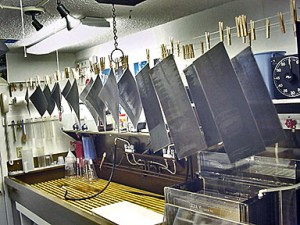 Everyone that has dabbled with their own film and print processing has been forced to build some sort of minimal darkroom. It is amazing to hear all of the darkroom stories from those that have been there and done that. But the truth is, there are many serious photographers, that have created amazing bodies of work with only the most basic darkrooms.
Everyone that has dabbled with their own film and print processing has been forced to build some sort of minimal darkroom. It is amazing to hear all of the darkroom stories from those that have been there and done that. But the truth is, there are many serious photographers, that have created amazing bodies of work with only the most basic darkrooms.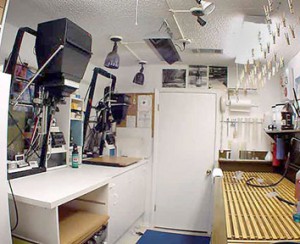

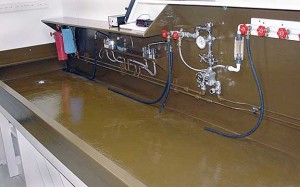
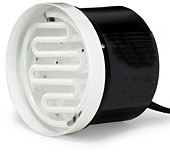 Ever wonder exactly how a Cold Light enlarger head works? How can light be Cold? The grid lamp-type enlarger light source definitely generates much less heat when compared to an incandescent light source. The heat of an incandescent lamp is generated by the infrared radiation produced by the heated filament in the lamp. A typical incandescent lamp produces more IR than visible light. In the simplest terms, the Cold Light does not generate that much IR, hence less heat. But what exactly is a Cold Light?
Ever wonder exactly how a Cold Light enlarger head works? How can light be Cold? The grid lamp-type enlarger light source definitely generates much less heat when compared to an incandescent light source. The heat of an incandescent lamp is generated by the infrared radiation produced by the heated filament in the lamp. A typical incandescent lamp produces more IR than visible light. In the simplest terms, the Cold Light does not generate that much IR, hence less heat. But what exactly is a Cold Light?
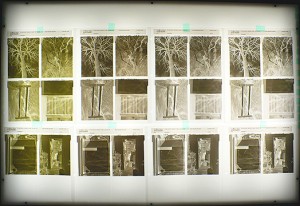
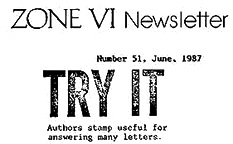 Never heard of Fred Picker? How about Zone VI Studios? If not, and if you are a serious practitioner of photographic art, I would suggest you learn about all of the aforementioned.
Never heard of Fred Picker? How about Zone VI Studios? If not, and if you are a serious practitioner of photographic art, I would suggest you learn about all of the aforementioned.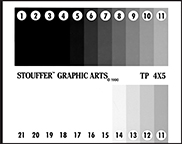 We have been on a quest for that little something extra in the photographic print. There are great prints, then there are prints that have that magical something. Printing comprises a great deal of the quality of the finished print, but you have to have the information on the negative before you can make the print. We have used Pyro film developers for some time now, and every time we find a new formula we do a little film testing and then eagerly head to the field to see what we have.
We have been on a quest for that little something extra in the photographic print. There are great prints, then there are prints that have that magical something. Printing comprises a great deal of the quality of the finished print, but you have to have the information on the negative before you can make the print. We have used Pyro film developers for some time now, and every time we find a new formula we do a little film testing and then eagerly head to the field to see what we have.